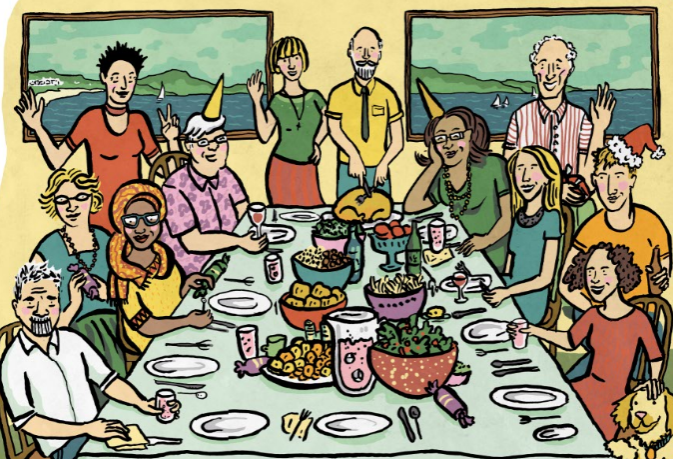By global comparisons, Sydney is a fortunate and equitable place even though we are grappling with the impacts of climate change and cyber-attacks, lack of affordable housing and traffic congestion.
Last week, as part of the UN climate talks in Paris, I spoke with Mayors from Rotterdam, Santiago and Addis Ababa about our efforts to jumpstart resilience in cities. How we respond to shocks like the Lindt siege is heavily dependent on how resilient we are as a city. And to manage the impact of future shocks, we’re going to have to invest now to build the capacity so it’s there when we need it.
Together with the Rockefeller Foundation’s 100 Resilient Cities program, we’ve recruited a Chief Resilience Officer for Sydney. Beck Dawson, our first ever CRO, has a far wider remit than simply the City of Sydney.
To build the kind of city-wide resilience we need means working across multiple layers of government, and planning the resources, policies and budget needed to manage future stresses and shocks.

Like other cities around the world, we’re experiencing increasing cyber-attacks — last year attacks on business and government increased by 20 percent. And the events of a year ago, when 18 people were held hostage for 16 hours in a café in Martin Place, and three people lost their lives — including the lone gunman who had a mental illness, a violent history and should not have been out on bail — was a traumatic experience for Sydney.
Police, paramedics and emergency services did an inspiring job during that trying time, with multiple levels of government working together under tightly practiced protocols.
The very real risk that the siege might set off a chain reaction of tit-for-tat attacks on Muslim Australians, fanned by tabloid columnists, was quickly dampened by our multicultural, harmonious society.
Our many communities came together in an outpouring of grief and solidarity, quickly coming up with #IllRideWithYou — a Twitter hashtag that linked people who wanted to stand (or in this case, travel) with their Muslim neighbours.
Two decades of sustained population growth has made our city the most densely populated in Australia, but we face declining housing affordability, rising inequality, growing homelessness and lone-person households at risk of social isolation. This crisis in housing affordability can only be solved with all of government and the construction sector working together.
We have worked to increase the supply of affordable housing for people on lower incomes — over 1300 homes have either been built or are in the pipeline and Council is now finalising a housing issues paper that identifies options for action.
Since 2004, we’ve completed over 250 major projects including parks, playgrounds, childcare, pools, libraries, theatres, community and cultural spaces. We’re now working on 370 projects as part of our 10-year capital works plan. These projects provide the spaces where people naturally meet, build relationships and become communities.
Sydney does well in global city rankings, but is constantly marked down for poor transport — a responsibility of our State Government. Congestion currently costs Sydney around $5 billion each year and that is projected to double by 2021 with a rapidly growing population.
We did our own research with the best minds in transport and city design, including renowned urbanist Jan Gehl, to develop a transport policy. Now most of our transport policies such as light rail, a bike network and pedestrianisation are reflected in the current Government’s own plan.
All these issues that demand resilience in our cities will be exacerbated by climate change, and the extremes of weather are accelerating.
Increasing heat is considered the most chronic issue, which in 2009 became an acute risk. After an intense drought and weeks of oppressive heat, the worst bushfire in Australia’s history killed 173 people, injured 5000 and destroyed over 2000 homes. As tragic as that day was, more people died from the heat in the weeks leading up to the bushfire than in the bushfire itself.
The smoke and ash produced by rampant bushfires is a threat, with air pollution directly affecting the people who live, work and visit the city. Extremely heavy rain is expected to remain a feature of Sydney’s weather patterns and become increasingly common. Rising sea levels are considered a minor threat in the short term – even so, waterfront developers are already assessing this risk and new developments have been raised in response.
Waiting for the worsening effects of climate change to eventuate is not an option.
We have invested heavily in reducing the carbon emissions causing climate change, setting an ambitious target to reduce emissions by 70 percent by 2030 (on 2006 levels). And our early resilience planning has set out priorities that the City will now act on, such as developing a heatwave response plan, raising awareness about climate-related events such as air pollution, bushfires and heatwaves and developing a sea level rise adaption action plan.
Other work in the pipeline includes working with energy companies to assess trigger points and potential vulnerability of the City’s power supply, and calling for changes to engineering and building standards and codes to address climate change.
We know building resilience on an urban scale means we must all work together — it’s not something that any one organisation or indeed one level of government can do.
By sharing information about key threats and tools for addressing those threats we can take a practical, cooperative approach. That will help us minimise the impacts of chronic stresses and deal with shocks when they come.
_______________
—
Clover Moore is the Lord Mayor of the City of Sydney.
This is the 10th piece in CPD’s ‘Secret Santas for Australia’ series. Each day we will reveal one ‘gift’ of good ideas from a prominent Australian on a policy issue close to their heart. You can see the full set here.

